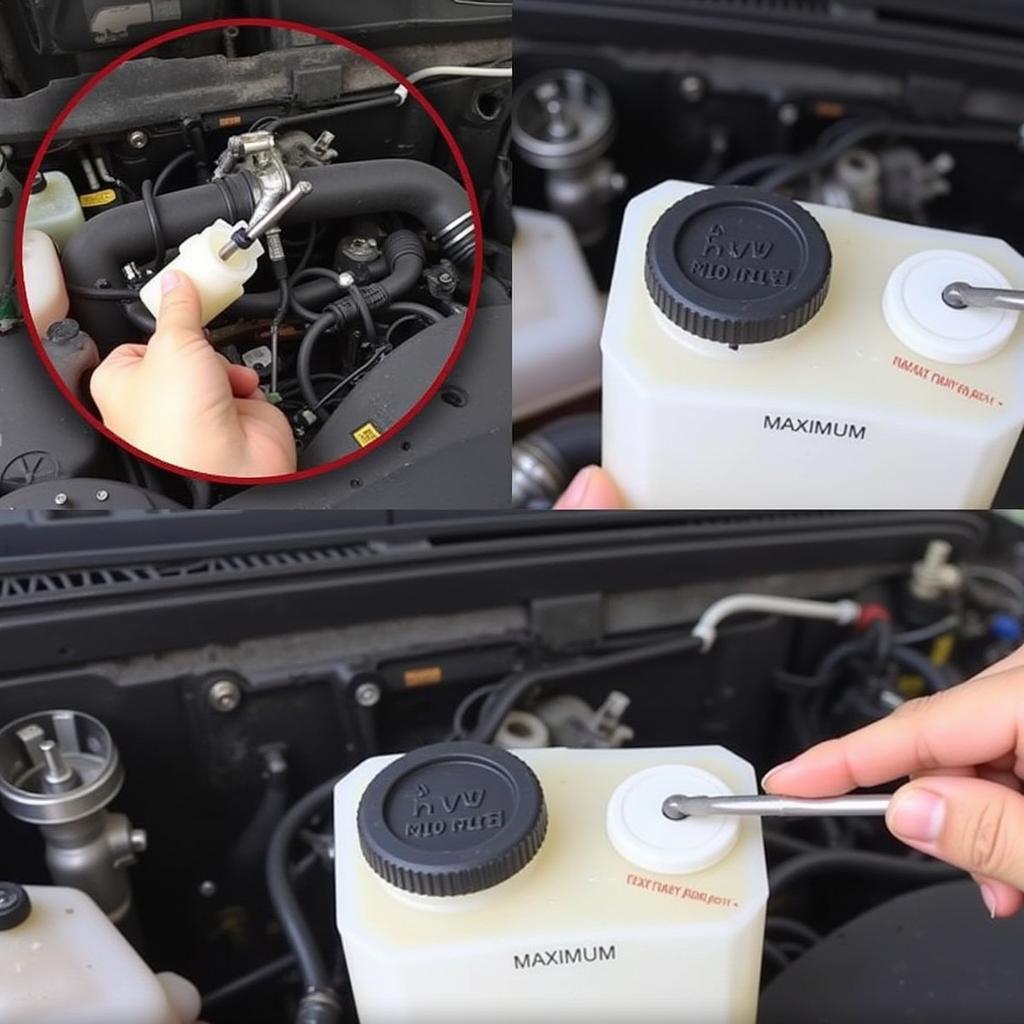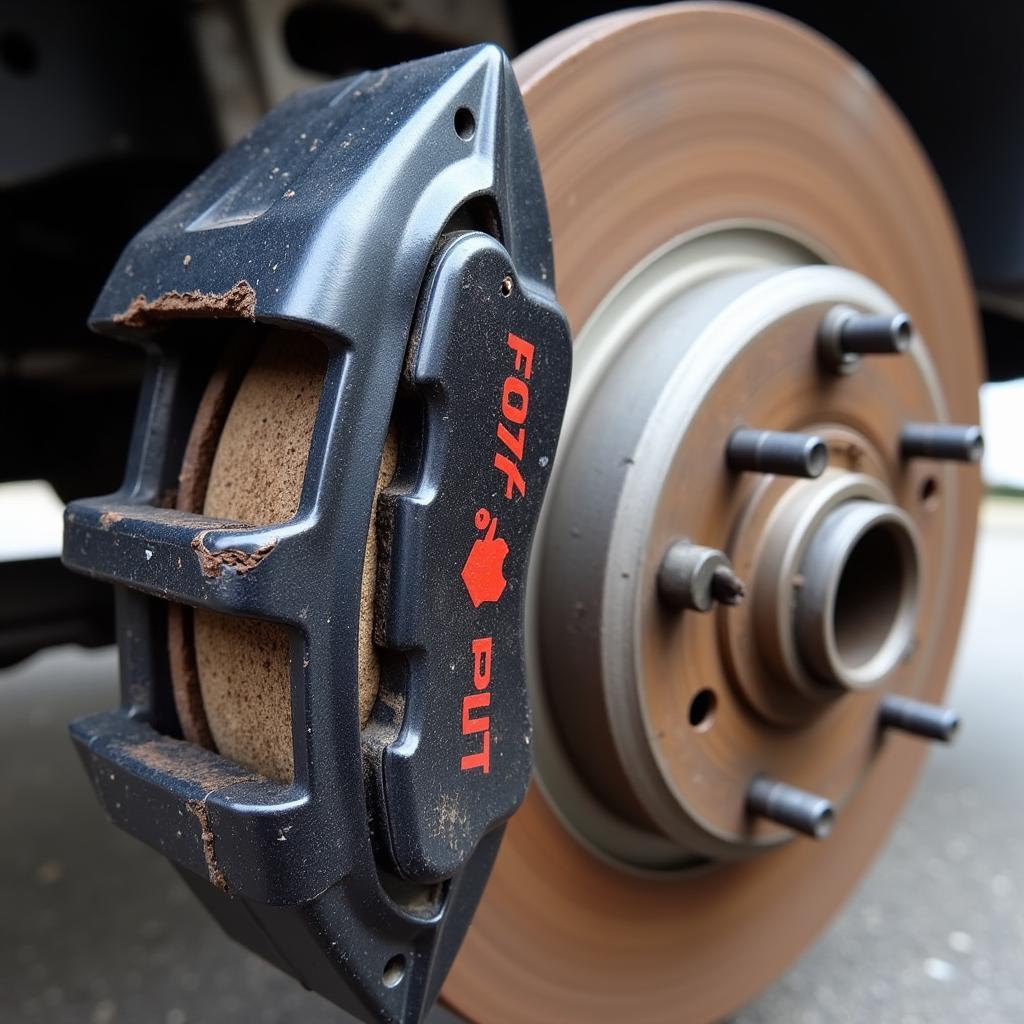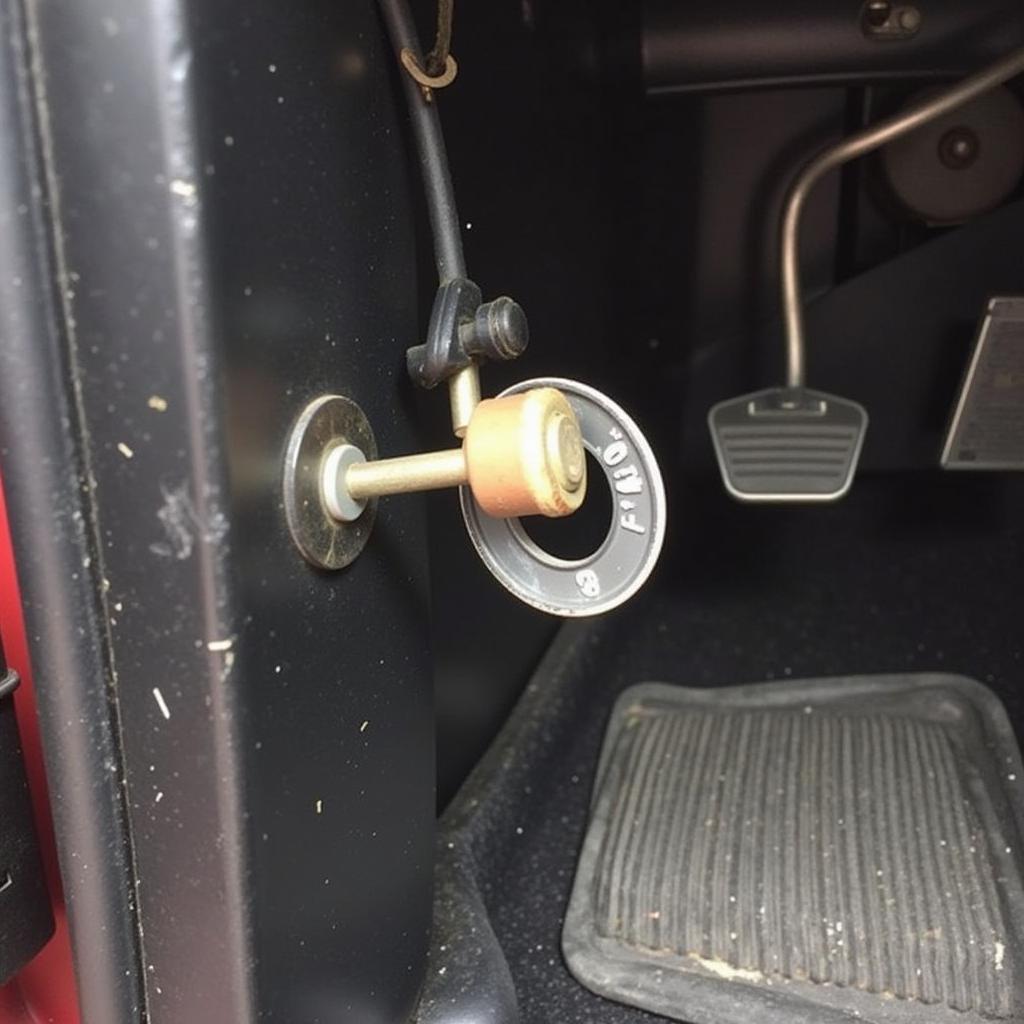A blinking brake warning light on your Ford F-150 can be a nerve-wracking experience. It signals a potential issue with your braking system, demanding immediate attention. Understanding the various causes and knowing how to troubleshoot this problem can save you time, money, and potentially prevent a dangerous situation. This article covers everything from simple checks to more complex diagnostic procedures, empowering you to address this issue effectively.
Why is My F-150 Brake Warning Light Blinking?
Several factors can trigger a blinking brake light, ranging from low brake fluid to more serious problems like a malfunctioning ABS system. Ignoring this warning could lead to reduced braking performance and compromise your safety.
Common Causes of a Blinking Brake Light
-
Low Brake Fluid: This is the most common culprit. Brake fluid is essential for transferring pressure from the brake pedal to the brake calipers, activating the brakes. A leak in the system can cause fluid levels to drop, triggering the warning light.
-
Worn Brake Pads: Brake pads wear down over time, and when they reach a critical point, a sensor triggers the warning light. Ignoring this can lead to metal-on-metal contact, damaging the rotors and reducing braking efficiency.
-
ABS Issues: The Anti-lock Braking System (ABS) prevents wheel lockup during hard braking. A malfunctioning ABS module, sensor, or wiring can cause the brake light to blink.
-
Faulty Brake Light Switch: The brake light switch activates the brake lights when you press the pedal. A faulty switch can sometimes cause the warning light to malfunction as well.
-
Parking Brake Engaged: Sometimes, the simplest explanation is the right one. Make sure the parking brake is fully disengaged.
 Checking Brake Fluid Level in F-150
Checking Brake Fluid Level in F-150
Troubleshooting Your F-150’s Blinking Brake Light
-
Check the Parking Brake: Ensure the parking brake is fully released.
-
Inspect Brake Fluid Level: Open the hood and locate the brake fluid reservoir. Check the fluid level against the minimum and maximum markings. If it’s low, add the correct type of brake fluid specified in your owner’s manual.
-
Inspect Brake Pads: Visually inspect the brake pads through the wheel spokes. If they appear thin or worn, it’s time for a replacement.
-
Check for Leaks: Look for signs of brake fluid leaks around the brake lines, calipers, and master cylinder. Leaks can appear as wet spots or drips.
“Regularly inspecting your brake system is crucial for preventing major issues. A simple check of the fluid level and brake pads can save you a lot of trouble down the road,” says Michael Davis, Senior Automotive Technician at Davis Auto Repair.
 Inspecting F-150 Brake Pads
Inspecting F-150 Brake Pads
When to Seek Professional Help
If the brake light continues to blink after checking these basic things, it’s time to seek professional help. A qualified technician can use diagnostic tools to pinpoint the exact cause of the problem, such as a faulty ABS sensor or module.
“Modern vehicles, like the F-150, have complex braking systems. While some checks can be done at home, diagnosing electronic issues requires specialized equipment and expertise,” adds Sarah Miller, Certified Automotive Diagnostic Specialist.
Conclusion
A blinking brake warning light on your F-150 should never be ignored. By understanding the common causes and following the troubleshooting steps outlined in this article, you can address the issue effectively and ensure your safety on the road. However, if the problem persists, seeking professional help is crucial to diagnose and fix any complex issues related to your F-150 brake warning light blinks.
FAQ
-
What type of brake fluid should I use in my F-150? Consult your owner’s manual for the correct brake fluid type.
-
How often should I check my brake fluid level? It’s recommended to check your brake fluid level at least once a month.
-
Can I drive my F-150 with a blinking brake light? It’s not recommended. A blinking brake light indicates a potential problem, and continuing to drive could compromise your safety.
-
How much does it cost to replace brake pads on an F-150? The cost varies depending on the type of brake pads and labor rates.
-
How long do brake pads last on an F-150? Brake pad lifespan depends on driving habits and conditions, but they typically last between 30,000 and 70,000 miles.
-
What is the ABS system, and why is it important? The Anti-lock Braking System (ABS) prevents wheel lockup during hard braking, allowing you to maintain steering control.
-
What should I do if my brake pedal feels spongy? A spongy brake pedal can indicate air in the brake lines or a problem with the master cylinder. Consult a mechanic immediately.

